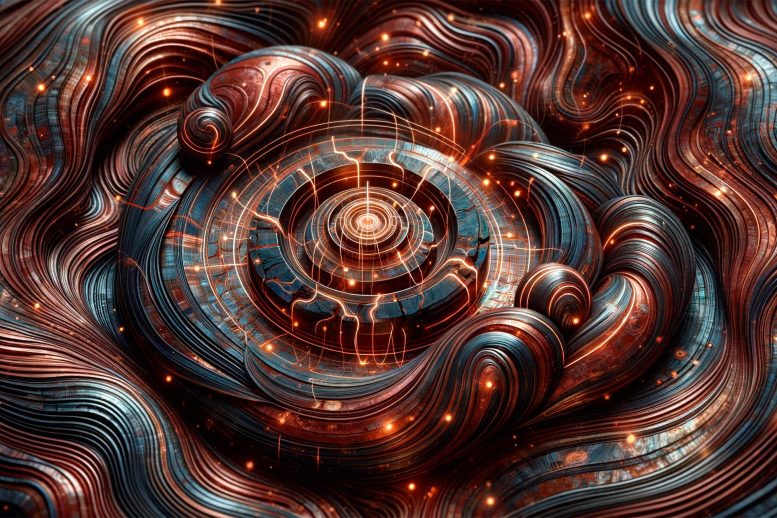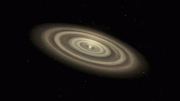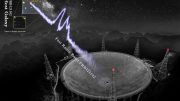
Researchers at the University of Cambridge have discovered magnetic monopoles in hematite, a material akin to rust, using diamond quantum sensing. This groundbreaking observation of emergent monopoles, which behave like isolated magnetic charges, could revolutionize computing technology by enabling faster and more environmentally friendly applications. Credit: SciTechDaily.com
Cambridge researchers have identified magnetic monopoles in hematite, suggesting new possibilities for advanced, eco-friendly computing technologies. This first-time observation of emergent monopoles in a natural magnet could unlock new avenues in quantum material research.
Researchers have discovered magnetic monopoles – isolated magnetic charges – in a material closely related to rust, a result that could be used to power greener and faster computing technologies.
Researchers led by the University of Cambridge used a technique known as diamond quantum sensing to observe swirling textures and faint magnetic signals on the surface of hematite, a type of iron oxide.
Emergent Monopoles and Swirling Textures
The researchers observed that magnetic monopoles in hematite emerge through the collective behavior of many spins (the angular momentum of a particle). These monopoles glide across the swirling textures on the surface of the hematite, like tiny hockey pucks of magnetic charge. This is the first time that naturally occurring emergent monopoles have been observed experimentally.
The research has also shown the direct connection between the previously hidden swirling textures and the magnetic charges of materials like hematite, as if there is a secret code linking them together. The results, which could be useful in enabling next-generation logic and memory applications, are reported today (December 5) in the journal Nature Materials.
Historical Perspective on Magnetic Monopoles
According to the equations of James Clerk Maxwell, a giant of Cambridge physics, magnetic objects, whether a fridge magnet or the Earth itself, must always exist as a pair of magnetic poles that cannot be isolated.
“The magnets we use every day have two poles: north and south,” said Professor Mete Atatüre, who led the research. “In the 19th century, it was hypothesized that monopoles could exist. But in one of his foundational equations for the study of electromagnetism, James Clerk Maxwell disagreed.”
Atatüre is Head of Cambridge’s Cavendish Laboratory, a position once held by Maxwell himself. “If monopoles did exist, and we were able to isolate them, it would be like finding a missing puzzle piece that was assumed to be lost,” he said.
Emergence Strategy and Collaborative Research
About 15 years ago, scientists suggested how monopoles could exist in a magnetic material. This theoretical result relied on the extreme separation of north and south poles so that locally each pole appeared isolated in an exotic material called spin ice.
However, there is an alternative strategy to find monopoles, involving the concept of emergence. The idea of emergence is the combination of many physical entities can give rise to properties that are either more than or different to the sum of their parts.
Working with colleagues from the University of Oxford and the National University of Singapore, the Cambridge researchers used emergence to uncover monopoles spread over two-dimensional space, gliding across the swirling textures on the surface of a magnetic material.
The swirling topological textures are found in two main types of materials: ferromagnets and antiferromagnets. Of the two, antiferromagnets are more stable than ferromagnets, but they are more difficult to study, as they don’t have a strong magnetic signature.
Antiferromagnets and Diamond Quantum Magnetometry
To study the behavior of antiferromagnets, Atatüre and his colleagues use an imaging technique known as diamond quantum magnetometry. This technique uses a single spin – the inherent angular momentum of an electron – in a diamond needle to precisely measure the magnetic field on the surface of a material, without affecting its behavior.
For the current study, the researchers used the technique to look at hematite, an antiferromagnetic iron oxide material. To their surprise, they found hidden patterns of magnetic charges within hematite, including monopoles, dipoles, and quadrupoles.
“Monopoles had been predicted theoretically, but this is the first time we’ve actually seen a two-dimensional monopole in a naturally occurring magnet,” said co-author Professor Paolo Radaelli, from the University of Oxford.
“These monopoles are a collective state of many spins that twirl around a singularity rather than a single fixed particle, so they emerge through many-body interactions. The result is a tiny, localized stable particle with diverging magnetic field coming out of it,” said co-first author Dr. Hariom Jani, from the University of Oxford.
“We’ve shown how diamond quantum magnetometry could be used to unravel the mysterious behavior of magnetism in two-dimensional quantum materials, which could open up new fields of study in this area,” said co-first author Dr. Anthony Tan, from the Cavendish Laboratory. “The challenge has always been direct imaging of these textures in antiferromagnets due to their weaker magnetic pull, but now we’re able to do so, with a nice combination of diamonds and rust.”
The study not only highlights the potential of diamond quantum magnetometry but also underscores its capacity to uncover and investigate hidden magnetic phenomena in quantum materials. If controlled, these swirling textures dressed in magnetic charges could power super-fast and energy-efficient computer memory logic.
Reference: “Revealing emergent magnetic charge in an antiferromagnet with diamond quantum magnetometry” by Anthony K. C. Tan, Hariom Jani, Michael Högen, Lucio Stefan, Claudio Castelnovo, Daniel Braund, Alexandra Geim, Annika Mechnich, Matthew S. G. Feuer, Helena S. Knowles, Ariando Ariando, Paolo G. Radaelli and Mete Atatüre, 5 December 2023, Nature Materials.
DOI: 10.1038/s41563-023-01737-4
The research was supported in part by the Royal Society, the Sir Henry Royce Institute, the European Union, and the Engineering and Physical Sciences Research Council (EPSRC), part of UK Research and Innovation (UKRI).









According to topological vortex gravitational field theory, monopoles are topological vortices. It has parity conservation, charge conjugation, and time reversal symmetry.
In the interaction of topological vortices, the world is an interconnected whole. Each particles has its own phase field. Every particles maintain the state of themselves in space and time through the interaction and balance of these phase fields.
CP violation is a pseudoscientific theory spread by Physical Review Letters (PRL).
Today, CP violation has been viewed by contemporary physics as the key to a deeper understanding of both the behaviour of elementary particles and the Big Bang origin of the universe. Here is an introduction to the CP violations by Proceedings of The National Academy of Sciences (PNAS).
1. If CP-symmetry is not violated, then the matter and antimatter that would have been produced in equal amounts in the early universe would have been annihilated, leaving behind only radiation, whereas theories with CP-violation can explain why, as the universe evolved, a little more matter survived than antimatter, and that makes up the matter we see.
2. There’s strong evidence that elementary particles called quarks (which constitute protons and neutrons) do violate CP-symmetry. The first indication of this came in 1964, when Val Fitch and James Cronin at the Brookhaven National Laboratory discovered violations of CP-symmetry in the decay of K-mesons, which are composed of one type of quark and another type of antiquark. Fitch and Cronin were awarded the Nobel Prize in Physics in 1980 for their efforts.
3. Still, the amount of violation is not enough to explain the excess of matter. So, physicists have begun looking for CP-violation in other classes of particles, such as leptons, the group which includes electrons and neutrinos, among others.
Experiments around the world are looking for signs of the charge conjugation and parity (CP) symmetry violation. However, in scientific research, falsifiable is more important than confirmation. If the topological vortex and its twin anti-vortex conform to the physical characteristics of matter and anti-matter, no one believes that in topological phase transition, a little more matter survived than antimatter.
Although there are many doubts and inconsistencies regarding CP violations, the Physical Review Letters (PRL) and the Proceedings of the National Academy of Sciences (PNAS) still refuse to discuss this topic. This is the hypocrisy, dirtiness, and ugliness of contemporary physics and so-called academic journals.
If you are really interested in science, you can browse the comments of the https://scitechdaily.com/microscope-spacecrafts-most-precise-test-of-key-component-of-the-theory-of-general-relativity/.
I hope more people dare to stand up and fight against the rampant pseudoscience, instead of being fooled by the pseudoscientific ideas of the Physics Review Letters (PRL).
Good luck to you all.
This finding reminds me of star surface activity our sun brings me the thought.
There is zero point technology out there and being used… Boa Hua, the term you need is not just planetary, but universal. The universe runs on a frequency based holomorphic principle
Thank you for your understanding and courage to speak the truth.
I hope you won’t be ostracized by so-called peers in your work.
Best wishes to you.
Hi I have a Meteorite Collection with Magnetics wonder if Hexagonal crystals & nickel iron would be useful in Quantum Exploration
Emergent particules are production of physical phenomenon with set of atoms like phonoms or emergent monipoles. You should never write monopole alone, thats a scientific mistake has monopoles are particules that have not yet detected. This work is ok but other have made similar experiences and isolate magnetic charges, we should say, distanced a north from a south. So no breakthrough.
God’s creation frequencies speak much of creation into existence and hold it together. He will up universe up like a scroll Is.34.